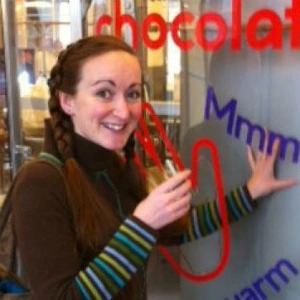
Joanna Grace is a special educational needs (SEN) and disabilities consultant who writes educational resources and sensory stories for individuals with SEN. Recently Joanna successfully ran The Sensory Story Project, to create a set of self resourcing sensory stories that parents, as well as teachers, could afford to buy. Orkid Ideas are proud to have been one of the backers of The Sensory Story Project. We invited Joanna to talk about the overlap between provision for children with special needs and provision for mainstream children and we’re delighted to share her thoughts with you here.
Good practice for children with special needs is good practice for all children
Many of the teaching methods and resources used in mainstream schools currently were originally developed for children with special needs. Classrooms have visual time tables, teachers think about the different learning styles of their pupils: visual, auditory, kinaesthetic, and nursery schools sign with their tots.
It makes sense that anything which amplifies learning for a child with special needs will also amplify learning for mainstream children. Meeting the challenges to learning for children presented by special needs enriches provision for all, it’s one of the wonderful effects inclusion has for all children.
I write sensory stories for individuals with profound and multiple learning difficulties for whom they offer the opportunity to engage with a range of sensory stimuli, develop their confidence, communication and increase their opportunities for socialising as well as giving their carers insight into ways of personalising their care. They’re a great resource and so much fun, and they work well with children who do not have any special needs.

Cognitive development, for all of us, relies on sensory stimulation. If we use our senses when we learn more of our brain is involved in our learning, quite literally more of it; and if more is involved then we’ve more chance of remembering.
A sensory story combines a concise narrative (typically less than 10 sentences) with a sequence of sensory experiences. I have written stories about the birth of stars in stellar nurseries, about the history of Victorian feminism, about fantasy adventures and about every day activities. I’ve written stories for Worldstories, Booktrust, Kensington Palace, the Holocaust Memorial Day Trust and lots more lovely organisations.
You can pack a lot of information into a small number of words; and you can also unpack all that information from a small number of words. When I revised for my exams at school I would take notes, and then take notes on my notes, and notes on my notes etc. Eventually I’d end up with a few sentences from which I could generate everything I knew about a topic. If those sentences had been accompanied by sensory stimuli I’d have been even more likely to remember them, and the process of revision would have been more fun.
It is good for everyone to recognise that communication isn’t solely reliant on language. Children who don’t have special needs can still struggle with speaking in public, or organising their thoughts into language. Think of that adage: a picture speaks a thousand words. Through using sensory stimuli to tell a story children who aren’t quite as adept at verbal communication can speak thousands upon thousands of words, through smells, tastes, touches, sights and sounds.
I’ve had lovely conversations with young people in mainstream nursery, primary and secondary schools, and yes – even a few universities, who’ve enjoyed learning in a sensory way and have begun to consider who these stories might have been written for. They can be a great tool for disability awareness.
The best thing about sensory stories is that they are fun. We all enjoy learning more (or escaping into that special place created by stories) if it’s fun. You can find out more at http://jo.element42.org
